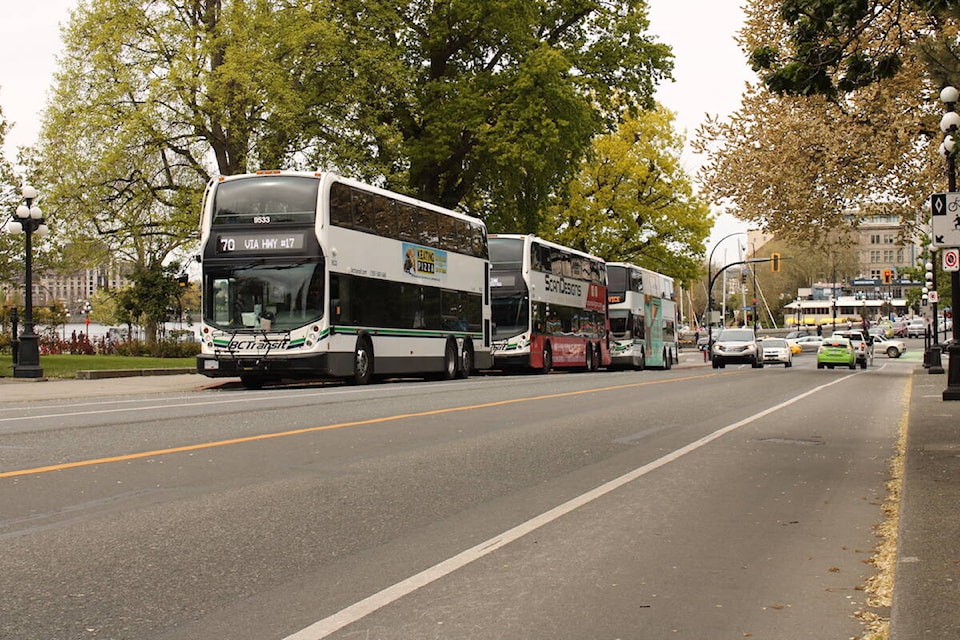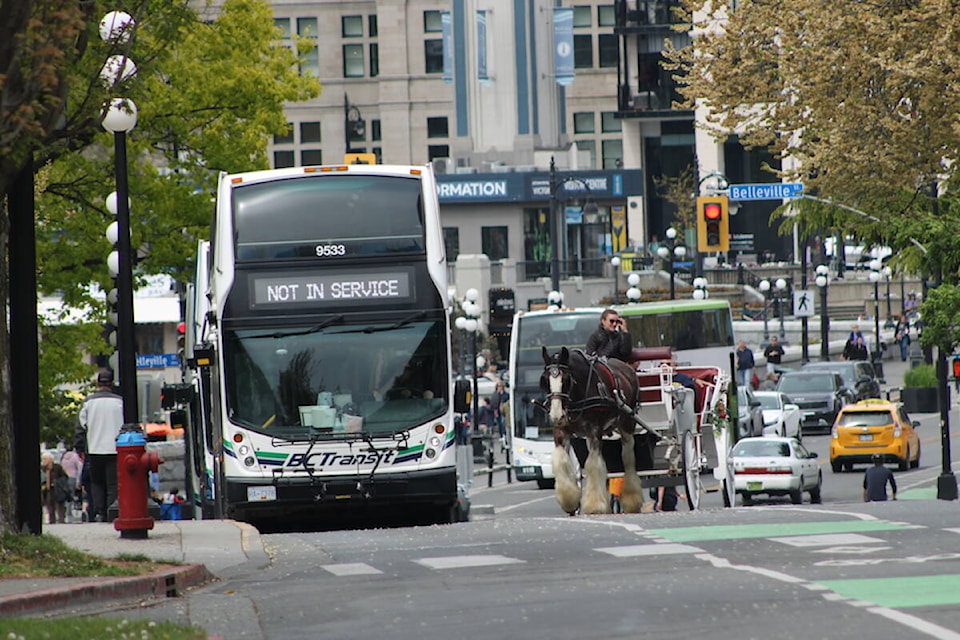As highways see congestion during daily commutes and with road transportation causing 40 per cent of the Capital Regional District’s (CRD) greenhouse gas emissions, officials recently showed they’re eager for new ways of getting people moving.
During an April presentation from BC Transit officials, members of the CRD’s transportation committee were mainly focused on the future of rail in the region’s transit system. Committee members were particularly interested in what would trigger a jump from bus services to light rail systems on highly travelled routes.
Several of the committee’s local politicians, who represent every corner of the region, said they get excited just talking about the prospect of rail in the CRD, with one saying the topic makes him feel “warm and toasty inside.”
BC Transit officials said the jump to rail would be informed by population densities along certain corridors, bus-ridership numbers on local routes and the experiences of other region’s that have swapped buses for trains. However, the officials noted their goal is to get people to where they need to go in the quickest way possible, and using whatever travel form allows for that to happen.
“At the moment, we are mode of transportation agnostic,” explained Carl Purvis, a planning manager with BC Transit. “We want to move the most number of people in the most efficient way, with the best use of our resources.”
The transit Crown corporation is watching as the world changes and populations grow, so it’s ensuring decisions being made now aren’t precluding the move to light rail down the road, Purvis added.
Greater Victoria’s Transit Future Plan has guided changes to the region’s bus system for the last 13 years. The plan is set to undergo an update that will identify benchmarks for when the region should bring in alternative transit modes. That update is expected to take around a year to complete.
Purvis said rail would have to be a successor of RapidBus systems, which have began rolling out in Greater Victoria over the past year on the 95 bus route.
In a statement to Black Press Media, BC Transit said RapidBus will serve riders for the “immediate future” and it’s shaved 20 minutes off a weekday commute between downtown Victoria and the West Shore. Future RapidBus lines, which see a bus arrive at stops at least every 15 minutes, are eyed to go up the Saanich Peninsula and along McKenzie Avenue.
The B.C. government’s Bill 47 is requiring municipalities to designate areas within 400 metres of bus exchanges as transit-oriented development (TOD) areas. The legislation compels municipalities to allow certain densities and heights near transit hubs and removes minimum parking requirements in those zones.

Bill 47 creating densely populated areas close to transit “will result in the long-term creation of livable and compact communities,” BC Transit said.
“If significant and useful developments are built around these hubs, more people will see public transit as a viable and accessible option,” the transit agency added.
One transit campaigner, however, says several spots in Greater Victoria are already being the turned into high-density stretches, but are lacking a vital piece by not having good transit running nearby. Eric Doherty, a transit advocate and a member of Climate Justice Victoria, said officials need to shift their approach and have rail or rapid-transit systems already running by the time major redevelopments are welcoming residents.
“Transit has to come first, you can’t have transit-oriented development without transit, it’s that simple,” he said in an interview.
The South Island Transportation Strategy was released in 2020 and states the province would explore the potential for a commuter rail line running between Victoria and Langford’s Westhills area.
The province recognizes the traffic congestion on the South Island and is currently reviewing studies regarding the feasibility of rail in the region, the Ministry of Transportation told Black Press Media.
“That review involves looking at how the population and infrastructure in our region has changed, and how and if rail and/or light rail could be supported,” the ministry said.
Victoria, Saanich, Langford, Colwood and View Royal are among the communities that have to designate transit-oriented development areas. Buildings up to 10 storeys, at least, will be allowed as-of-right within 200 metres of bus exchanges, along with ones up to six storeys permitted within 400 metres of those bus hubs.
The Legislature, Royal Oak, UVic, Langford and Uptown bus exchanges must be designated as TOD areas by June 30.
READ: B.C. launches its first transit-oriented affordable housing project
